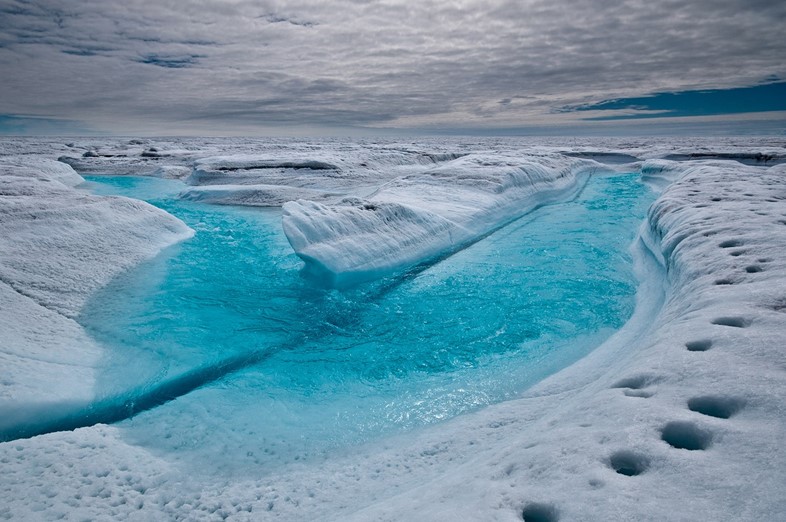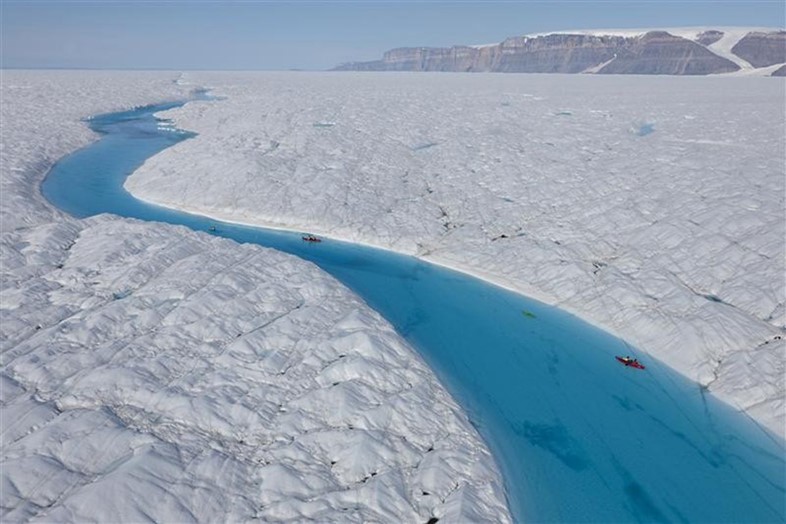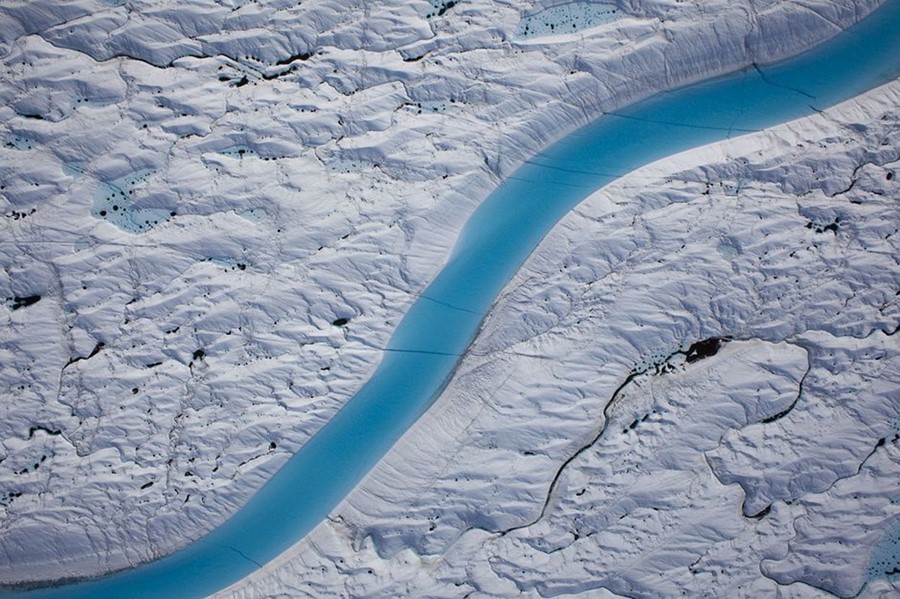super/collider looks to northern Greenland, where surreal ribbons of blue water weave their way across the vast white ice sheets to magical effect
Where on Earth?
Petermann Glacier, Greenland
GPS Coordinates: 80°45′N 60°45′W
High atop the world, out on the vast, white ice sheets of northern Greenland, the change in seasons is currently creating one of the most surreal and beautiful landscapes on the planet. Every spring, as the sun returns to the northern hemisphere, millions of tiny pools and puddles begin to form on the ice. As the temperature rises, they become small lakes and streams start to run down over and into the glaciers. Gathering pace and joining others, they grow larger and cut channels through the vast white expanse. The ultra-clear water in these meandering blue channels gives them an otherworldly purity – set against the eye-popping ice and utterly silent emptiness of these remote parts of the world.
Getting there is expensive and dangerous, but it can be done. The BBC captured incredible video footage of a glacial river for “Frozen Planet” and Greenpeace mounted an expedition in 2009 to measure the thickness of the Petermann Glacier below a meltwater channel. To do so, scientists Alan Hubbard, Jason Box and Richard Bates paddled down one of these glacial arteries, towing ice-penetrating radar equipment using four kayaks. The team got the incredibly rare chance to meander down 25km of untouched blue and white wilderness, measuring melt-rates and ice composition while highlighting the impacts of climate change.

What on Earth?
Although natural, meltwater channels are forming with increasing frequency and size thanks to warming global temperatures. As they dive down into the glaciers on which they arise, these rivers hit the rock far below and continue their downhill journey. This lubricates the space between the rock and the ice sheet above, contributing to faster glacial motion and break-up. If global temperatures continue to rise, these surreal ribbons of blue water will accelerate the melting and destruction of the Greenland icecap – a beautiful yet deadly reminder that we need to turn things around.
“To say this landscape is vast and otherworldly doesn't even begin to describe it,” says photographer Nick Cobbing, who documented the Greenpeace expedition. “The kayaks lent a scale to the landscape, something to grade those cracks and circles; offering a reference point for the magical detail of the blue moonscape below me. These ravines had it all: sweeping bends, majestic mountains towering one kilometre high and Petermann Glacier itself, seemingly infinite to the eye.”

How on Earth?
Flying all the way to Greenland and then helicoptering out to see something caused in part by climate change is insane, so we’re not even going to provide travel advice here.
